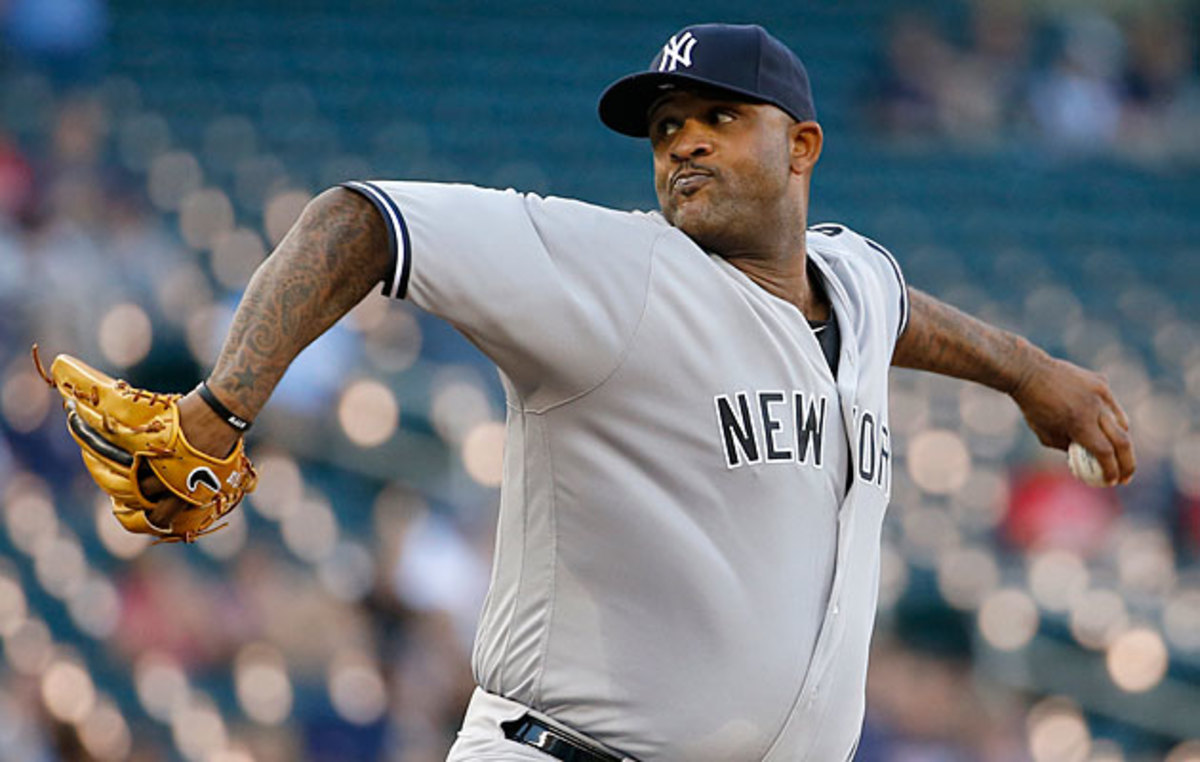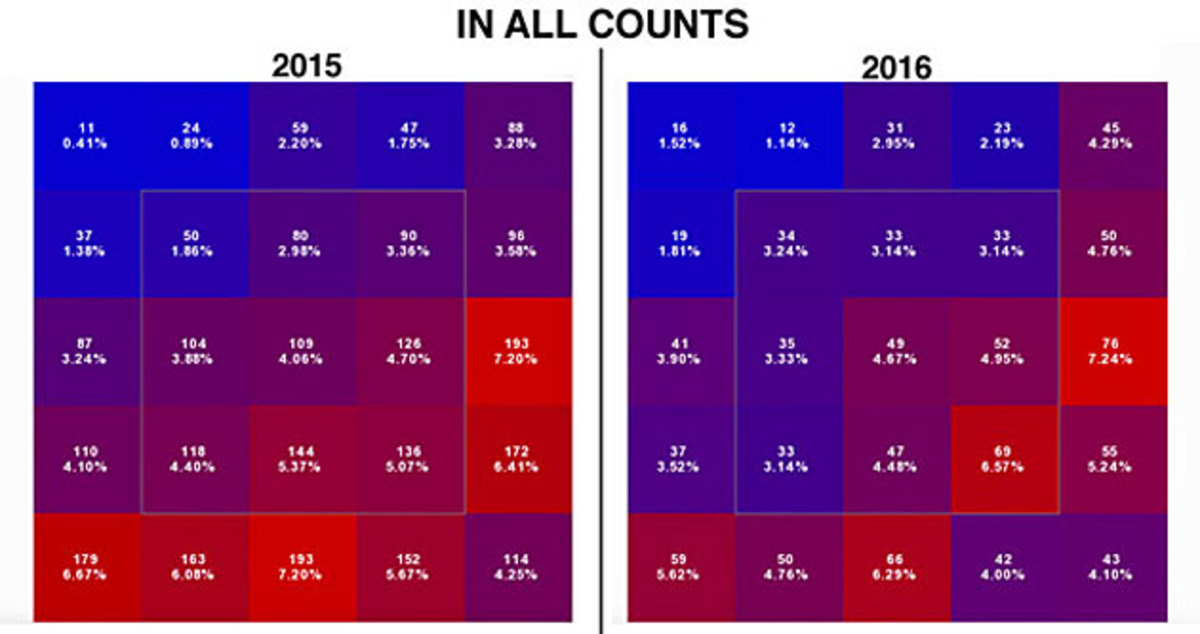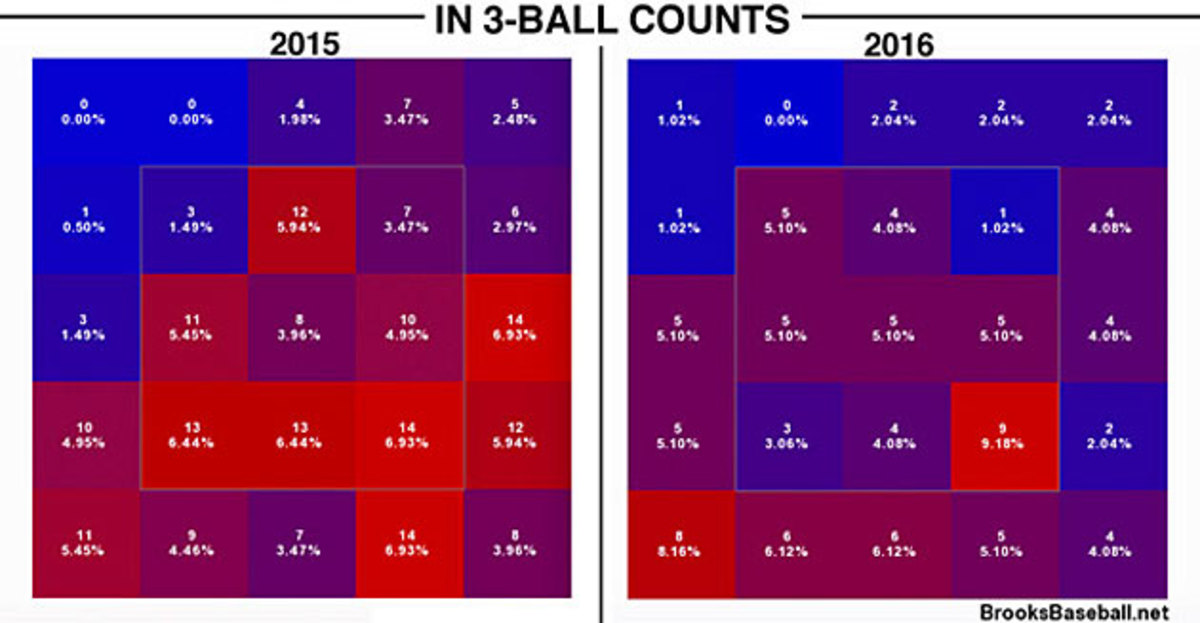CC Sabathia is pitching like an ace again. Here's how Yankees' lefty did it

Your teams. Your favorite writers. Wherever you want them. Personalize SI with our new App. Install on iOSor Android.
From their highest paid stars to their lowliest scrubs, the Yankees haven't had too many pleasant surprises this season. One of the few reasons they retain any hope of contending despite a 32-34 record has been the performance of erstwhile ace CC Sabathia. The 35-year-old lefty, who last October left the team to check into an alcohol rehabilitation center, has built on his late-2015 rebound to emerge as New York's most reliable starter—not to mention one of the hottest pitchers in baseball.
On Thursday evening in Minneapolis, Sabathia held the Twins to one run on six hits and three walks over six innings while striking out seven in a much-needed 4-1 win. The outing lowered his ERA to 2.20, a mark that would rank second in the league if he weren't two-thirds of an inning shy of qualifying; due to a 15-day stint on the disabled list in May for a groin strain, Sabathia has pitched 65 1/3 innings, while the Yankees have played 66 games.
Despite that interruption, Sabathia is amid one of the stingiest stretches of his career. He's made seven straight starts without allowing more than two runs, one shy of his personal best, set twice before: in 2007, the same year he won the AL Cy Youg Award with the Indians, and in 2011, when he finished fourth in the voting. Sabathia owns the majors' lowest ERA (0.82) since the start of May, ahead of fellow southpaws Madison Bumgarner (1.12) and Clayton Kershaw (1.14). Both have far more innings than his 44 in that span, not to mention stronger peripherals, but the point isn't whether Sabathia is superior to them, it's whether he's superior to the pitcher he has been for most of the past three seasons.
The answer appears to be a resounding "yes." Last year, Sabathia pitched to a 4.73 ERA and a 4.68 FIP in 29 starts totaling 167 1/3 innings, with 7.4 strikeouts and 1.5 homers per nine, respectively. Over the three-season span from 2013 to '15, he was hit for a 4.81 ERA (83 ERA+) and 4.40 FIP in 424 1/3 innings, making just eight starts in 2014 due to surgery to remove a bone spur and clean up his right knee. It was after a disabled list stint for inflammation in that same knee—where he's pitching with bone-on-bone arthritis—that he began using a knee brace to stabilize his delivery and prevent him from feeling jolts of pain when he lands on his front leg. He posted a 2.17 ERA in five September starts with the brace, including a five-inning, one-run slog through cold, wet conditions on Oct. 1 that allowed the Yankees to beat the Red Sox and clinch their first postseason berth since 2012.
That outing kicked off what's now a career-best 12-start stretch of allowing three runs or fewer, but it also set up a turning point in Sabathia’s life. He later said that he didn't partake in the post-clinch celebration, but that he drank heavily by himself in his hotel room in Baltimore the next two nights. In the wake of that, on the final day of the regular season, he met with manager Joe Girardi and general manager Brian Cashman to tell them that he needed to confront the drinking problem that he had been concealing since late 2012. With the team's blessing, Saabthia entered rehab two days later, the day that New York lost the AL wild-card game to the Astros, and spent a month there, beginning a battle that will extend long past the end of his baseball career.
Sabathia had to win a much lower-stakes battle in the spring merely to be part of the Yankees' rotation, though his late-season run and $25 million salary suggested that he would get a shot at starting sooner or later as long as he stayed healthy. Save for the 15-day stint on the disabled list, he has been, and thanks to the stability afforded by the brace, he's better able to repeat his delivery with more consistency. His velocity is in line with last year—an average of 90.1 mph on his sinker according to Brooks Baseball, down from a peak of 94.5 mph back in 2009, when he helped New York win its most recent World Series title in his first year in the Bronx after signing a seven-year, $161 million contract (it's since been replaced by a five-year, $122 million deal that expires after this season). It’s his repertoire that has changed; he's largely scrapped his four-seam fastball, which he threw 28.3% of the time last year and well over 40% of the time from 2008 to '13, in favor of a cutter, which he's throwing 32.7% of the time after only throwing a total of 30 such pitches previously. Former Yankees teammate Mariano Rivera, who famously rode the cutter to the all-time saves record and a likely Hall of Fame berth, helped him hone the pitch in spring training.
• Subscribe to get the best of Sports Illustrated delivered right to your inbox
Whereas Sabathia’s four-seamer was hit for a .300 batting average and a .467 slugging percentage when put in play last year, with just 7.4% generating swings and misses, the cutter has been hit for a .217 average and .265 slugging percentage, with an 11.1% whiff rate. What's more, while Sabatha's sinker was tagged for a .311 average and a .514 slugging percentage last year, those marks are down to .255 and .355 this year, respectively.

With his revised repertoire, Sabathia has yielded just two homers in 2016; his rate of 0.3 per nine would lead the league if he were qualified. That may be unsustainable, as his 3.1% rate of home runs per fly ball is just about one-third of his career norm of 9.7%, but he's generating a ton of popups (18.5% of all fly balls) as well as a healthy 46.7% groundball rate (all data via FanGraphs). His walk rate is elevated, at 3.7 per nine, but he has yet to allow a homer in any of the 59 times he's reached three-ball count, compared to five homers out of 121 three-ball counts last year; it's better to walk a hitter than to challenge him with mediocre stuff and serve up a dinger. As you can see from the color of these shots from Brooks Baseball—more blue and purple, less red—he’s staying out of the strike zone with more regularity and particularly with three-ball counts:


Overalll, Sabathia's 3.29 FIP suggests there's room for regression, but he's been by far the Yankees' most reliable starter, with a staff-high 73% quality start rate to go with his low ERA. Masahiro Tanaka (3.08 ERA, 3.51 FIP, 62% quality start rate) is the only other member of the starting five preventing runs at a better-than-average clip, while Nathan Eovaldi (4.90 ERA), Ivan Nova (4.77 ERA), Michael Pineda (5.88 ERA) and Luis Severino (7.46 ERA) have been erratic at best and awful at worst; the 22-year-old Severino, who was so phenomenal down the stretch last year, was optioned to Triple A Scranton/Wilkes-Barre after missing time due to a triceps strain. The starters besides Sabathia and Tanaka have combined for a 40% quality start rate, and the rotation as a whole ranks eighth in the league with a 4.47 ERA.
• How will Mets handle replacing David Wright at third base?
Even with the heat-throwing bullpen triumvirate of Dellin Betances, Andrew Miller and Aroldis Chapman, there's only so far that trio can take the Yankees, particularly given an offense that's wheezing along at 4.00 runs per game, 13th-best in the American League. Still, it's a welcome change that Sabathia appears to have his life back in order, and that his performance has been among the things going right for the team.
"It is definitely easier now because I don't feel like I'm hiding anything," Sabathia told ESPN New York recently. "I can be my carefree self and sleep well at night."
Sabathia has one more year under contract via a $25 million option that vests if he doesn't suffer a left shoulder injury that either sends him to the disabled list for 45 days, puts him to the DL with a season-ending injury or forces him to the bullpen for more than six appearances.
If Sabathia keeps pitching like this, he’s got a chance to extend his major league career beyond next year, and perhaps put himself back onto the Hall of Fame track that he appeared to be on as of 2012. With 219 wins and 2,630 strikeouts, he’s not far from the realm of consideration. But even if he never winds up in Cooperstown, his turnaround, on both the mound and in the rest of his life, is worth pulling for.
